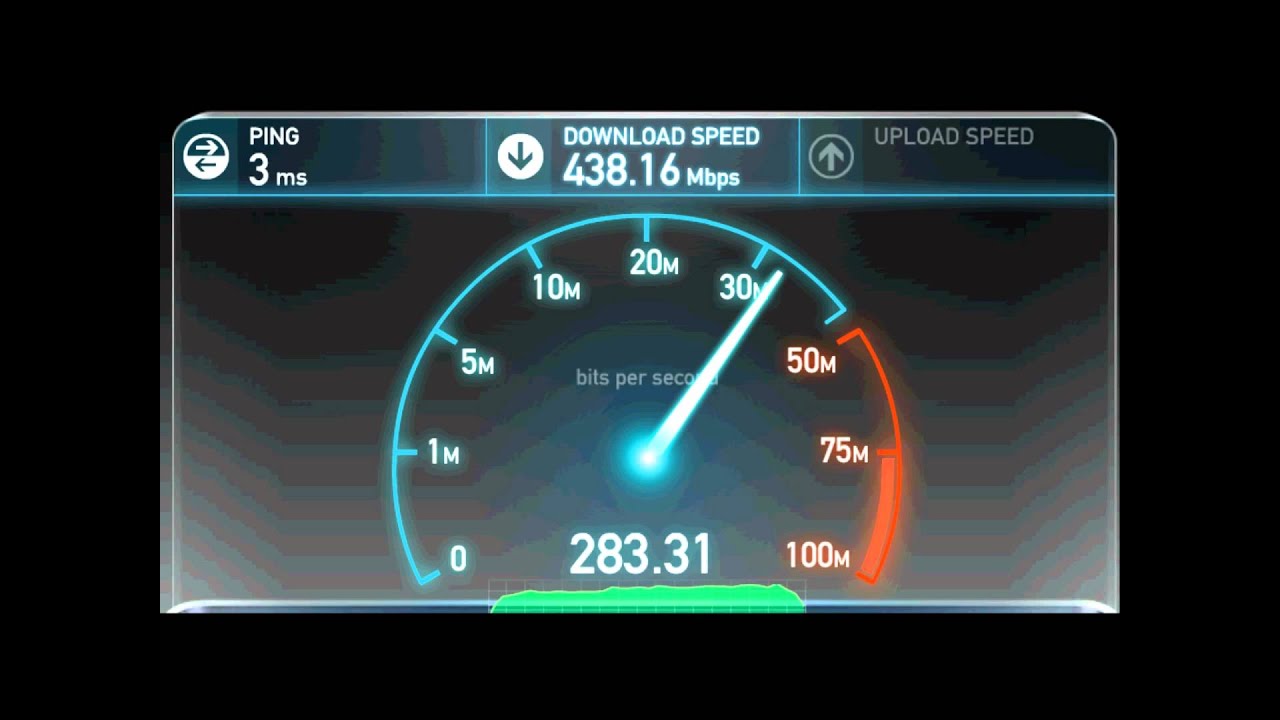Discover the top internet providers for remote work in 2024. Learn about the importance of speed and reliability, compare leading providers like Verizon Fios, AT&T, and Spectrum, and get tips for optimizing your remote work setup.
24 October, 2024 | Posted by: Pablo Mendoza
Category: Internet | No Comments

In the era of remote work, a reliable internet connection is more than just a convenience—it's a necessity. As people increasingly work from home, the demand for high-speed and dependable internet has skyrocketed. This guide delves into the best internet providers for remote work in 2024, offering insights into how to optimize your home office setup for maximum productivity.
For remote workers, internet speed and reliability are crucial. A fast connection ensures seamless video conferencing, quick file transfers, and efficient use of cloud-based applications. A minimum of 100 Mbps download and 10 Mbps upload speed is recommended for remote work, especially if multiple users are sharing the connection. Reliable internet minimizes disruptions, allowing you to maintain productivity without worrying about frequent outages or slowdowns.
Here are some of the top internet providers that cater to remote work needs:
| Provider | Speed | Reliability | Latency | Special Features |
|---|---|---|---|---|
| Verizon Fios | Up to 940 Mbps | High | Low | Fiber-optic technology, no contracts |
| AT&T Fiber | Up to 1 Gbps | High | Low | No data caps, extensive coverage |
| Spectrum | Up to 400 Mbps | Moderate | Moderate | No data caps, extensive coverage |
Choosing the right internet provider can significantly enhance your remote work experience. Based on speed, reliability, and additional features, Verizon Fios and AT&T Fiber are top picks for those who have access to their fiber services. For those looking for a more budget-friendly option with extensive coverage, Spectrum is a solid choice.
Reliable internet is not just about maintaining connections; it's about redefining the workplace for the future of work.
Looking for the best internet provider for streaming in 2024? Compare Xfinity, AT&T Fiber, and Verizon Fios on speed, reliability, and customer reviews. Get the ultimate guide to streaming with no buffering.
26 December, 2024 | Posted by: Pablo Mendoza
Category: Internet | No Comments

In 2024, streaming continues to dominate as the preferred way to consume entertainment, making the choice of internet provider crucial for an uninterrupted and high-quality experience. With an increasing number of streaming services offering 4K and live content, having a reliable, fast internet connection is more important than ever. This guide will help you navigate the best internet providers for streaming, focusing on speed, reliability, and overall performance.
The quality of your streaming experience depends heavily on your internet speed and the reliability of your connection. For HD streaming, a minimum of 5 Mbps is recommended, while 4K streaming requires at least 25 Mbps. However, to avoid interruptions and to accommodate multiple users, a faster connection is often necessary. Reliability is also critical, as frequent drops or inconsistent speeds can disrupt your viewing experience, leading to frustration.
Xfinity is known for its extensive coverage and high-speed internet options, making it a top choice for streaming. With plans ranging from 100 Mbps to 1 Gbps, Xfinity provides ample bandwidth for streaming in HD and 4K. The service is designed to support multiple devices streaming simultaneously, which is ideal for households with several users. Xfinity also offers features like the X1 DVR, which integrates seamlessly with streaming services, providing a unified entertainment experience.
AT&T Fiber offers some of the fastest and most reliable internet speeds available, perfect for those who demand the best streaming experience. With fiber-optic technology, AT&T delivers speeds starting at 300 Mbps, with options up to 5 Gbps in certain areas. This ensures a smooth streaming experience, even for 4K content, without the worry of buffering or slowdowns during peak usage times. The reliability of fiber optics also means fewer interruptions and a more consistent connection overall.
Verizon Fios is another excellent option for streaming, known for its fiber-optic network that delivers consistent high speeds and low latency. With speeds up to 940 Mbps, Verizon Fios can handle multiple 4K streams simultaneously, making it ideal for large households or heavy users. Verizon Fios also offers a range of streaming-related features, including seamless integration with smart TVs and streaming devices, ensuring that your entertainment experience is both high-quality and convenient.
When comparing the top providers for streaming, speed, and bandwidth are crucial factors. Xfinity, AT&T Fiber, and Verizon Fios all offer speeds that are more than sufficient for HD and 4K streaming. However, there are differences in other aspects, such as data caps, customer service, and additional features.
All three providers offer high speeds, with Xfinity and Verizon Fios providing up to 1 Gbps, and AT&T Fiber offering up to 5 Gbps in select areas. These speeds are ideal for streaming high-definition and 4K content, as well as for households with multiple users.
Xfinity imposes data caps on some of its plans, which could be a limitation for heavy streamers. In contrast, AT&T Fiber and Verizon Fios offer unlimited data on their fiber plans, making them more attractive options for those who stream large amounts of content.
Customer feedback for these providers highlights AT&T Fiber and Verizon Fios as leaders in reliability and speed consistency, while Xfinity is often praised for its wide availability and fast speeds. However, Xfinity's customer service and data caps have been points of criticism.
Here are some tips to ensure the best streaming performance:
For those looking for the best streaming experience in 2024,AT&T Fiber and Verizon Fios stand out for their high speeds, reliability, and unlimited data plans. Xfinity is also a strong contender, particularly for users who need wide availability and fast speeds, though the presence of data caps may be a consideration for heavy streamers.
Discover the best unlimited internet plans in 2024 with no data caps. Compare Google Fiber, AT&T Fiber, and Spectrum to find the perfect plan for your streaming, gaming, and browsing needs.
24 October, 2024 | Posted by: Pablo Mendoza
Category: Internet | No Comments

As internet usage continues to grow, the demand for unlimited data plans has surged. Whether you're a heavy streamer, a gamer, or simply have multiple users in your household, an internet plan with no data caps can provide peace of mind and cost savings. This guide explores the top providers offering unlimited data plans, highlighting their benefits, customer reviews, and more.
Unlimited data plans allow users to enjoy the internet without worrying about hitting data limits. This is particularly beneficial for households with multiple devices, as well as for those who stream video content, play online games, or download large files regularly. These plans offer cost efficiency by eliminating overage fees and providing a consistent monthly bill, regardless of usage. Moreover, unlimited data plans ensure that all users in the household can stay connected without compromising on speed or performance.
Google Fiber is known for its lightning-fast internet speeds and truly unlimited data plans. With speeds reaching up to 2 Gbps, Google Fiber is ideal for users who need the fastest possible internet for activities like 4K streaming, online gaming, and video conferencing. Although Google Fiber is only available in select cities, its reliability and performance make it a top choice for those who can access it. Plans typically start around $70 per month for 1 Gbps, with no data caps or contracts.
AT&T Fiber offers no data caps on most of its fiber plans, making it a great option for users who require high-speed internet without the worry of data limits. AT&T’s fiber network is widely available in urban and suburban areas, with speeds ranging from 300 Mbps to 1 Gbps. Pricing is competitive, starting at $55 per month for 300 Mbps, and the service is known for its reliability. However, AT&T Fiber is not as widely available in rural areas, which may limit access for some users.
Spectrum provides unlimited data on all its plans, with no contracts and wide availability across 41 states. Although Spectrum’s speeds are lower compared to fiber options, ranging from 200 Mbps to 1 Gbps, it is a solid choice for households that prioritize flexibility and affordability. Pricing typically starts at $49.99 per month for 200 Mbps, and Spectrum’s no-contract policy allows users to switch plans or providers without penalty. While Spectrum offers broad coverage, users may experience slower speeds during peak times.
| Provider | Plan Name | Speeds | Pricing | Data Cap |
|---|---|---|---|---|
| Google Fiber | 1 Gbps | 1 Gbps | $70/month | Unlimited |
| Google Fiber | 2 Gbps | 2 Gbps | $100/month | Unlimited |
| AT&T Fiber | Internet 300 | 300 Mbps | $55/month | Unlimited |
| AT&T Fiber | Internet 500 | 500 Mbps | $65/month | Unlimited |
| AT&T Fiber | Internet 1000 | 1 Gbps | $80/month | Unlimited |
| Spectrum | Internet | 200 Mbps | $49.99/month | Unlimited |
| Spectrum | Internet Ultra | 400 Mbps | $69.99/month | Unlimited |
| Spectrum | Internet Gig | 1 Gbps | $109.99/month | Unlimited |
Pros: Extremely fast speeds, no data caps, reliable service.
Cons: Limited availability, higher pricing in some areas.
Pros: Wide availability, competitive pricing, no data caps on fiber plans.
Cons: Limited availability of fiber in rural areas, potential equipment fees.
Pros: No data caps on all plans, wide availability.
Cons: Slower speeds compared to fiber, possible price increases after the first year.
Customer feedback on these providers varies, with Google Fiber consistently receiving high marks for speed and reliability, though its limited availability is a downside. AT&T Fiber is praised for its competitive pricing and performance, particularly in areas where fiber is available. Spectrum receives mixed reviews; customers appreciate the unlimited data and no-contract options but sometimes report issues with speed consistency and customer service.
For those who need the fastest speeds and have access to it, Google Fiber is the best choice. AT&T Fiber offers a reliable and affordable option for most users, particularly in urban areas, while Spectrum provides flexibility and no data caps across a wide coverage area, making it suitable for users who prioritize availability and no long-term commitments.
Discover the top internet providers for rural areas in 2024. Explore options like Viasat, HughesNet, and Rise Broadband, compare their speeds, pricing, and coverage to find the best fit for your rural internet needs
23 October, 2024 | Posted by: Pablo Mendoza
Category: Internet | No Comments

Access to high-speed internet has become a necessity in our daily lives, but for rural areas, reliable internet options remain limited. This guide explores the best internet providers for rural communities in 2024, focusing on the unique challenges these areas face, the top providers, and how they stack up in terms of speed, reliability, and customer satisfaction.
Rural areas often struggle with limited infrastructure, which directly impacts the availability and quality of internet services. The high costs associated with laying fiber or cable lines in sparsely populated areas often lead to slower speeds and higher prices for consumers. Additionally, many rural areas still rely on older technologies, such as DSL or satellite, which are less reliable and slower compared to urban internet services. Satellite internet, while a common solution, is susceptible to weather-related disruptions, making consistent connectivity a challenge.
Viasat has established itself as a leading satellite internet provider, particularly in rural areas where traditional broadband services are unavailable. The company offers a range of plans designed to meet different needs, from basic browsing to heavy streaming and gaming. Viasat's coverage is extensive, reaching even the most remote areas, but it comes with some drawbacks, such as higher latency due to the nature of satellite technology.
HughesNet is another major player in the satellite internet space, providing consistent speeds across all its plans. While HughesNet’s maximum speed is lower than Viasat’s, it offers more affordable plans, making it a viable option for budget-conscious consumers. However, HughesNet's data caps can be restrictive, particularly for users who require more data for streaming or online work.
Rise Broadband offers fixed wireless internet, an alternative to satellite that can provide lower latency and competitive pricing. While not as widely available as Viasat or HughesNet, Rise Broadband is a strong option where it is offered, particularly for users who need more reliable speeds and lower latency for activities like online gaming or video conferencing.
| Provider | Plan Name | Speeds | Pricing | Data Cap | Latency |
|---|---|---|---|---|---|
| Viasat | Basic | 12 Mbps | $50/month | 40 GB | 600-700 ms |
| Viasat | Advanced | 50 Mbps | $100/month | 100 GB | 600-700 ms |
| Viasat | Premium | 100 Mbps | $150/month | 150 GB | 600-700 ms |
| HughesNet | Basic | 25 Mbps | $59.99/month | 10 GB | 600-700 ms |
| HughesNet | Choice | 25 Mbps | $69.99/month | 20 GB | 600-700 ms |
| HughesNet | Prime | 25 Mbps | $99.99/month | 50 GB | 600-700 ms |
| Rise Broadband | Basic | 25 Mbps | $45/month | 250 GB | Lower than Satellite |
| Rise Broadband | Preferred | 50 Mbps | $65/month | 250 GB | Lower than Satellite |
| Rise Broadband | Premium | 50 Mbps | $85/month | Unlimited | Lower than Satellite |
Each provider has its own strengths and weaknesses, which can make a significant difference depending on your specific needs.
Viasat: offers higher speeds and larger data plans, making it suitable for users who need to stream or game regularly. However, the higher latency and pricing may be a concern for some users.
HughesNet: is ideal for budget-conscious consumers who do not require high data caps. The consistent speeds make it a good choice for basic internet needs, but the lower speeds and data limits can be restrictive.
Rise Broadband: provides a compelling alternative with lower latency and competitive pricing. It's a great choice for users who need reliable internet for activities like online gaming or video conferencing, though its availability is limited compared to satellite providers.
Customer feedback varies for each provider. Viasat generally receives positive reviews for its speed and reliability, though some customers express frustration with data throttling. HughesNet is praised for its consistent speeds, but its data caps are a common complaint. Rise Broadband garners positive reviews for its customer service and pricing, though coverage limitations are a frequent concern.
When choosing an internet provider in rural areas, your specific needs and budget will play a crucial role. If you need higher speeds and larger data allowances, Viasat is likely the best option. For those who are more budget-conscious and have basic internet needs, HughesNet is a solid choice. If available in your area, Rise Broadband offers lower latency and competitive pricing, making it an excellent choice for more interactive online activities.
Discover what internet speed you need in 2024 with our comprehensive guide. Learn about Mbps and Gbps, different household needs, how to test your speed, and recommendations for streaming, gaming, and remote work
24 October, 2024 | Posted by: Pablo Mendoza
Category: Internet | No Comments

Internet speed is measured in megabits per second (Mbps) or gigabits per second (Gbps). These units indicate how much data can be transferred per second. 1 Gbps equals 1000 Mbps. Higher speeds mean faster downloads, smoother streaming, and a better overall internet experience.
The internet speed you need depends on your household's online activities. Here’s a breakdown:
Speed Requirement: 1-5 Mbps
Ideal for: Checking emails, browsing the web, social media
Speed Requirement: 5-25 Mbps
Ideal for: Watching videos on platforms like Netflix or YouTube in high definition
Speed Requirement: 25-50 Mbps
Ideal for: Streaming ultra-high-definition content without buffering
Speed Requirement: 25-100 Mbps
Ideal for: Multiplayer gaming, downloading game updates, streaming gameplay
Speed Requirement: 10-50 Mbps
Ideal for: Video calls, large file uploads/downloads, VPN usage
Speed Requirement: 50-200+ Mbps
Ideal for: Households with multiple users streaming, gaming, and working simultaneously
Testing your internet speed is easy and can be done using online tools. Follow these steps:
Here are our recommendations for different internet activities, along with suggested plans from major providers:
Recommended Speed: 10-25 Mbps
Providers and Plans:
Recommended Speed: 25-50 Mbps
Providers and Plans:
Recommended Speed: 50-100 Mbps
Providers and Plans:
Recommended Speed: 20-50 Mbps
Providers and Plans:
| Activity | Recommended Speed (Mbps) | Providers and Plans |
|---|---|---|
| Basic Browsing & Email | 1-5 | Various |
| Streaming HD Video | 5-25 | AT&T Internet 25 ($50), Spectrum Internet ($49.99) |
| Streaming 4K Video | 25-50 | Google Fiber 1000 ($70) |
| Online Gaming | 25-100 | AT&T Internet 100 ($60), Spectrum Internet Ultra ($69.99) |
| Remote Work & Video Calls | 10-50 | AT&T Internet 50 ($55), Google Fiber 1000 ($70) |
Choosing the right internet speed for your needs ensures a smooth and efficient online experience. Here are some tips to help you make the best choice:
For more detailed information on choosing the right internet speed, read How Fast Does Internet Need to Be for Streaming, Gaming, and More?.